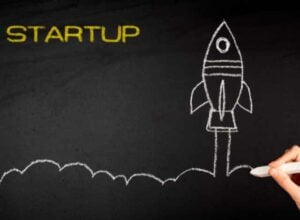In an increasingly unpredictable world, the significance of business continuity and disaster recovery (BC/DR) cannot be overstated. Companies face a myriad of potential disruptions, ranging from natural disasters like hurricanes and earthquakes to man-made crises such as cyberattacks and supply chain failures. The ability to maintain operations during these challenging times is not just a matter of resilience; it is essential for survival.
A well-structured BC/DR plan ensures that businesses can continue to function, protect their assets, and safeguard their reputation, even in the face of adversity. The landscape of business operations is evolving rapidly, with technology playing a pivotal role in how organizations manage risks. As companies increasingly rely on digital infrastructure, the potential for disruptions has grown exponentially.
Therefore, having a robust BC/DR strategy is not merely a precaution; it is a strategic imperative. This article will delve into the critical components of a BC/DR proposal, providing actionable insights and real-world examples to help businesses enhance their preparedness and response capabilities.
Understanding the Importance of a Proposal
Establishing a Common Goal
By clearly defining objectives, strategies, and expected outcomes, a proposal can align the entire organization towards a common goal. Moreover, a comprehensive BC/DR proposal can significantly enhance an organization’s credibility when seeking funding or support from external sources.
Enhancing Credibility and Trust
Investors, partners, and clients are increasingly scrutinizing companies’ preparedness for potential disruptions. A detailed proposal demonstrates that an organization is proactive in its approach to risk management, which can foster trust and confidence among stakeholders.
Securing Contracts and Support
For instance, a technology firm that presents a thorough BC/DR proposal may find it easier to secure contracts with clients who prioritize data security and operational continuity. This proactive approach can also lead to increased support from external sources, further solidifying the organization’s position in the market.
Proactive Risk Management
Overall, a well-crafted proposal is essential for any organization seeking to establish a robust business continuity and disaster recovery strategy, and it can have a significant impact on the organization’s overall success and credibility.
Components of a Business Continuity and Disaster Recovery Proposal
A successful BC/DR proposal comprises several key components that work together to create a cohesive strategy. First and foremost, an executive summary provides an overview of the proposal’s objectives and significance. This section should capture the attention of decision-makers and succinctly convey the urgency of implementing a BC/DR plan.
Following the executive summary, the proposal should include a detailed analysis of potential risks and vulnerabilities specific to the organization. This section should highlight the various threats that could impact operations, such as natural disasters, technological failures, or human errors. Additionally, outlining the potential consequences of these risks can help stakeholders understand the importance of investing in BC/DR initiatives.
Another critical component is the identification of key personnel and their roles within the BC/DR framework. Clearly defining responsibilities ensures that everyone understands their part in maintaining continuity during a crisis. Furthermore, including timelines for implementation and testing phases can provide clarity on the project’s progression and help keep stakeholders engaged throughout the process.
Conducting a Risk Assessment
Conducting a thorough risk assessment is a fundamental step in developing an effective BC/DR proposal. This process involves identifying potential threats to the organization and evaluating their likelihood and impact. By systematically analyzing risks, businesses can prioritize their efforts and allocate resources more effectively.
To conduct a risk assessment, organizations should gather input from various departments to gain a comprehensive understanding of vulnerabilities across the entire operation. For example, a manufacturing company may face risks related to equipment failure, supply chain disruptions, or labor shortages. By engaging different teams in this assessment, businesses can uncover hidden risks that may not be immediately apparent.
Once risks have been identified, organizations should categorize them based on their severity and likelihood of occurrence. This categorization allows businesses to focus on high-priority risks that could have catastrophic consequences if not addressed. For instance, if a company identifies cyberattacks as a significant threat, it can allocate resources towards enhancing its cybersecurity measures as part of its BC/DR strategy.
Developing a Recovery Plan
After conducting a risk assessment, the next step is to develop a comprehensive recovery plan tailored to the organization’s specific needs. A recovery plan outlines the procedures and actions that will be taken in response to various disruptions, ensuring that critical functions can be restored as quickly as possible. An effective recovery plan should include detailed procedures for communication during a crisis.
Establishing clear lines of communication is vital for keeping employees informed and engaged during challenging times. For example, a financial institution may implement an automated messaging system to notify employees about operational changes or safety protocols during an emergency. Additionally, the recovery plan should prioritize critical business functions and outline strategies for maintaining or restoring them.
This may involve identifying alternative suppliers, establishing remote work capabilities, or implementing backup systems for data storage. By proactively addressing these aspects, organizations can minimize downtime and ensure continuity even in adverse conditions.
Budgeting and Resource Allocation
Budgeting is a crucial aspect of any BC/DR proposal, as it determines the resources available for implementing the plan effectively. Organizations must assess their financial capabilities and allocate funds strategically to address identified risks and recovery needs. When developing a budget for BC/DR initiatives, businesses should consider both direct costs (such as technology investments) and indirect costs (such as employee training).
For instance, investing in cloud-based backup solutions may require upfront costs but can save money in the long run by reducing downtime during disruptions. Moreover, organizations should explore potential funding sources for their BC/DR initiatives. Government grants, industry partnerships, or insurance policies may provide financial support for implementing robust continuity plans.
By diversifying funding sources, businesses can enhance their financial resilience while ensuring they have adequate resources to address potential threats.
Implementation and Testing
Once the proposal has been developed and approved, it is time for implementation. This phase involves putting the recovery plan into action and ensuring that all employees are trained on their roles within the BC/DR framework. Effective training programs are essential for fostering a culture of preparedness within the organization.
Testing the BC/DR plan is equally important to ensure its effectiveness in real-world scenarios. Regular drills and simulations can help identify gaps in the plan and provide valuable insights into areas that require improvement. For example, conducting tabletop exercises where employees role-play their responses during a crisis can reveal weaknesses in communication protocols or decision-making processes.
Additionally, organizations should establish metrics to evaluate the success of their BC/DR initiatives continually. By tracking key performance indicators (KPIs), businesses can assess their readiness for potential disruptions and make data-driven adjustments to their strategies as needed.
Conclusion and Next Steps
In conclusion, developing a robust business continuity and disaster recovery proposal is essential for organizations seeking to navigate an increasingly complex risk landscape. By understanding the importance of such proposals and incorporating key components like risk assessments, recovery plans, budgeting strategies, and testing protocols, businesses can enhance their resilience against potential disruptions. As companies move forward with their BC/DR initiatives, it is crucial to foster a culture of preparedness throughout the organization.
Engaging employees at all levels in training programs and simulations will ensure that everyone understands their roles during crises. Furthermore, regularly reviewing and updating the BC/DR plan will help organizations stay ahead of emerging threats. Ultimately, investing time and resources into developing an effective BC/DR proposal is not just about compliance; it is about safeguarding the future of the organization.
By taking proactive steps today, businesses can position themselves for success in an uncertain tomorrow.























